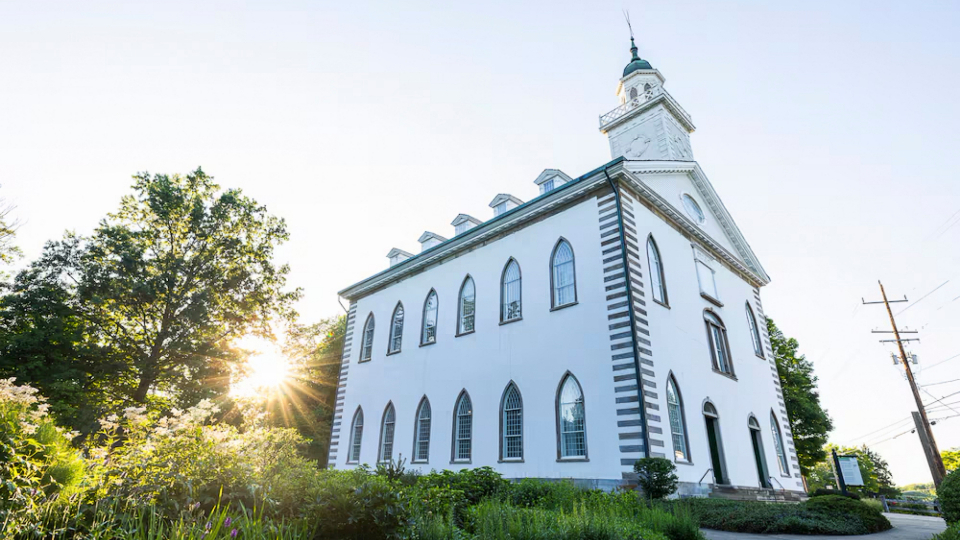
Casey-Paul-Griffiths
The sun sets on the Kirtland Temple in Kirtland, Ohio, on Friday, June 14, 2024. Photo by Isaac Hale, courtesy of Church News.All rights reserved.This story appears here courtesy of TheChurchNews.com. It is not for use by other media.
By Casey P. Griffiths, for the Church News
A few years ago, I had a unique experience in the Kirtland Temple. At the time, the temple was owned by Community of Christ, and a dear friend from that church agreed to meet with me and a few colleagues there on a Sunday morning.
He led us into the first floor, known as the “house of worship” by the early Saints. We talked for a few minutes as we sat in the narrow pews, and then he allowed us to walk up in the Melchizedek Priesthood pulpits. Our friend then asked us if we wanted a moment to kneel in prayer.
I will never forget the feelings that rushed over me as I kneeled down just a few feet away from the place where the resurrected Jesus Christ appeared to Joseph Smith and Oliver Cowdery on April 3, 1836. Their description of the Savior flowed into my mind:
“His eyes were as a flame of fire; the hair of his head was white like the pure snow; his countenance shone above the brightness of the sun; and his voice was as the sound of the rushing of great waters, even the voice of Jehovah, saying: I am the first and the last; I am he who liveth, I am he who was slain; I am your advocate with the Father” (Doctrine and Covenants 110:3-4).
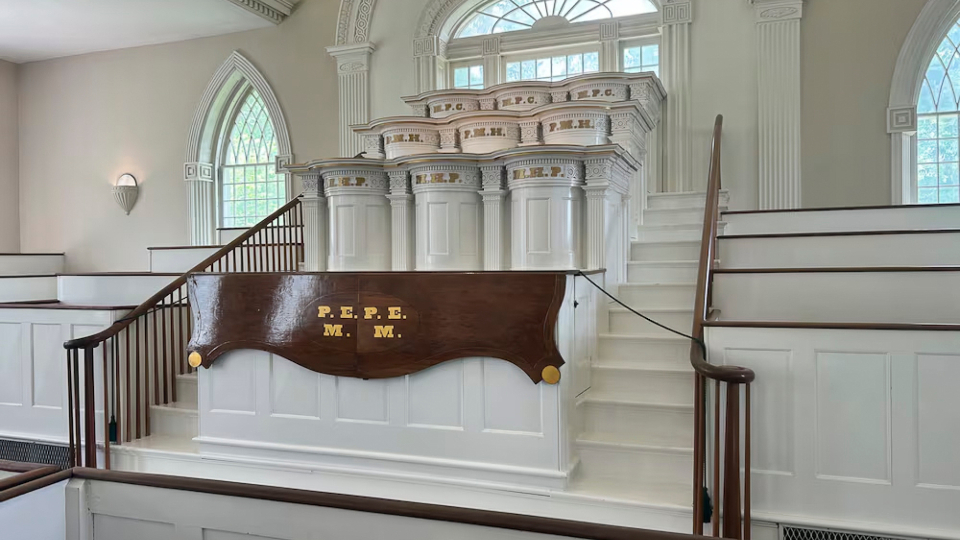
Casey-Paul-Griffiths
A view of the first-floor pulpits inside the Kirtland Temple, where the Savior, Moses, Elias and Elijah appeared on April 3, 1836. Photo courtesy of Church News.All rights reserved.In the years since, I have traveled to the Holy Land and stood in places where Jesus likely walked, like the Valley of the Doves near the Sea of Galilee, or the steps leading up to the temple in Jerusalem. But I don’t know of anywhere outside of the temple in Kirtland, Ohio, where a person can say right down to a few inches that they are near a place where Jesus stood.
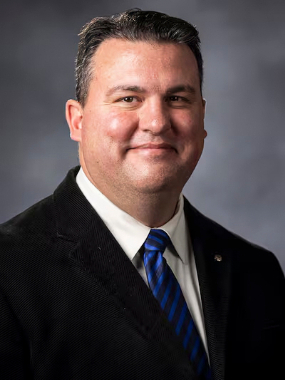
Casey-Paul-Griffiths
Casey Paul Griffiths is an associate teaching professor of Church History and Doctrine at Brigham Young University. Photo by Donovan Kelly, BYU, courtesy of Church News.All rights reserved.As much as anything, that experience in the Kirtland Temple captures why I love studying the Doctrine and Covenants so much. There is a reality to Latter-day Saint history that is unique and beautiful. In places like Kirtland; Palmyra, New York; Far West, Missouri; and Nauvoo, Illinois, there is a sense that Jesus Christ is not just an ancient teacher but a living Savior who still inspires and ministers to people in our time. The lives of the early Saints remind us that Christ is the great “I Am,” not the great “I was.”
In 2025, the Doctrine and Covenants will serve as the course of study for “Come, Follow Me” in The Church of Jesus Christ of Latter-day Saints. This year gives us a wonderful opportunity to explore the challenges and the beauty of Latter-day Saint history. While studying Church history or the Doctrine and Covenants is a great idea anytime, here are three reasons why 2025 is a particularly exciting time to jump in.
First, it is not an exaggeration to say we are living in the golden age of Latter-day Saint history. The beginnings of this stretch back to 2005, when the Joseph Smith Papers project (online at josephsmithpapers.org) was launched. The diligent researchers of the JSP have labored for nearly 20 years to make available nearly every relevant document linked to Joseph Smith Jr. in several remarkable volumes and one essential website. With a few clicks, you can not only read the earliest account of Joseph’s First Vision, you can view the very paper he wrote it on. You can examine every pen stroke he and his scribes used to record the sacred revelations of the Doctrine and Covenants.
That project is now nearing its culmination, and its capstone will be a new biography of Joseph Smith Jr., written by Richard E. Turley Jr. The new openness sparked by the Joseph Smith Papers project has led to an explosion of new scholarship and interpretation of Latter-day Saint history. The Saints today can study the Doctrine and Covenants with a depth never before possible.
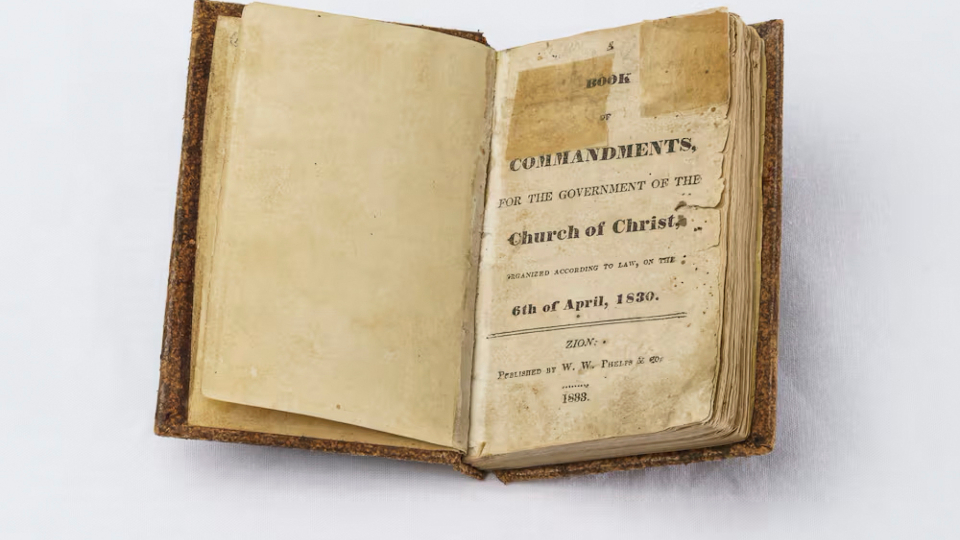
Casey-Paul-Griffiths
The 1835 edition of the Doctrine and Covenants. Photo by Cordale Ottley, courtesy of Church News.All rights reserved.Just as Matthew, Mark, Luke and John recorded the miracles and ministry of the Savior, faithful writers like Wilford Woodruff, Eliza R. Snow, Willard Richards and others recorded the struggles, trials and miracles of the early Saints. One of the great blessings of studying Church history is that there are just as many sources from faithful women as there are from faithful men. You can read Oliver Cowdery’s testimony of seeing an angel, or read Amanda Smith’s harrowing account of the Hawn’s Mill Massacre, or read the story of Jennetta Richards, the first convert in Europe.
Regardless of your background, it isn’t difficult to find someone in Church history who has a story that can bring you hope and inspiration.
That brings us to my third reason — these stories are our stories. The Doctrine and Covenants isn’t an ancient document left behind by a people long gone. It is a living, breathing, growing text of scripture. It can be a little more challenging to understand than other books of scripture because it is still being created. It tells our story. It is our book of scripture. It may not be in its final form yet, but one day this book will tell the story of the Latter-day Saints the same way the Book of Mormon bears witness of the Lehites and the Bible is the record of the Jews.
Part of our unique understanding is knowing that Jesus Christ spoke to people in every era of the world all over the world. The revelations of the Doctrine and Covenants contain the voice of Jesus Christ to His Saints in our time. A red-letter edition of the Doctrine and Covenants would show that the words of Christ are on practically every page. Most revelations in the Doctrine and Covenants begin with words like, “Thus saith the Lord your God, even Jesus Christ, the Great I Am” (Doctrine and Covenants 38:1).
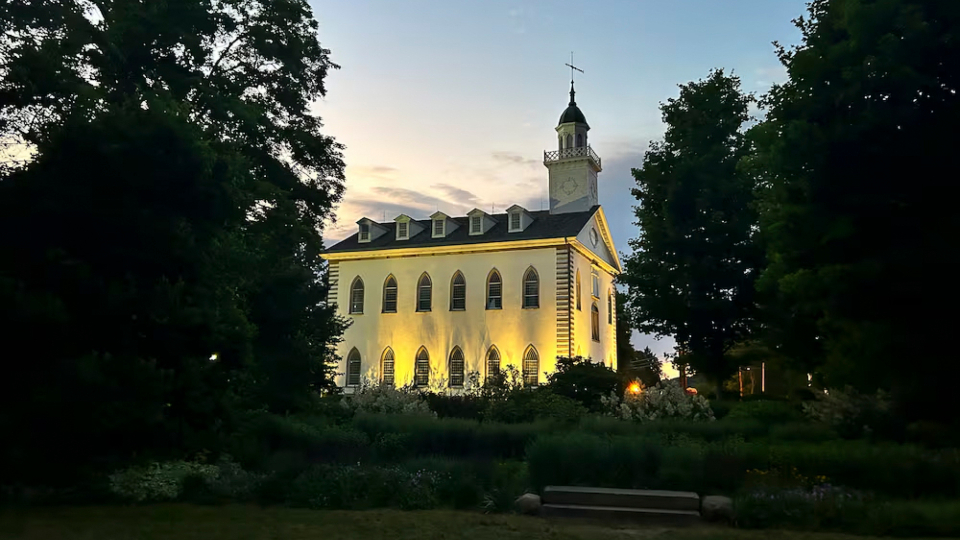
Casey-Paul-Griffiths
The Kirtland Temple with lights in the early evening, in Kirtland, Ohio, in 2024. Photo by Casey P. Griffiths, courtesy of Church News. All rights reserved.To return to where I started, a few months ago I visited the Kirtland Temple again. This was the first time I visited since ownership was transferred back to the Church. We toured through the temple, led by a senior missionary couple from Liberty, Utah. It was a few months before the busy season in the summer, so we were about to take a little extra time to explore the building more thoroughly.
The tour concluded at the Melchizedek Priesthood pulpits where the Savior, Moses, Elias and Elijah appeared to Joseph Smith and Oliver Cowdery. Standing in front of the pulpits, the missionaries bore a fervent testimony of the resurrection of Christ and His appearance in the temple. While Joseph and Oliver were the only two witnesses of this sacred event, in the weeks leading up to and during the dedication, hundreds of Saints witnessed spiritual manifestations. To them, the dedication of the temple was a culmination of years of sacrifice and effort.
I wonder what they would think if they came to our time, where a temple dedication has become an almost weekly event. In fact, not far from Kirtland, ground was just broken for a new temple in Cleveland that will be dedicated not too far into the future.
These two temples in Ohio, along the hundreds of temples now operating, under construction or in the planning stages, capture the past, present and future of the Restoration. As we study the Doctrine and Covenants and our history this year, we will honor the builders of days now past, all while creating new sacred spaces of worship around the world. In the years to come, the sanctified sites of Palmyra, Kirtland, Independence and Nauvoo will be joined by new hallowed ground in diverse places such as Dubai, Bengaluru and Kiribati.
The story will go on and will become even more rich and meaningful in its complexity. All of us can contribute to writing this great story of the ministry and miracles of Jesus Christ in the latter days.
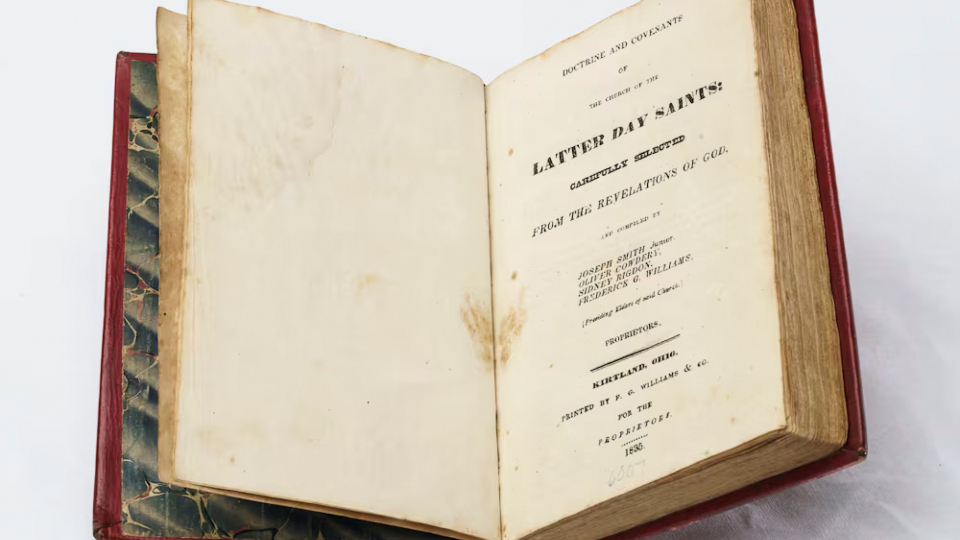
Casey-Paul-Griffiths
The 1835 edition of the Doctrine and Covenants. Photo by Cordale Ottley, courtesy of Church News.All rights reserved.— Casey Paul Griffiths is an associate teaching professor in the Department of Church History and Doctrine at Brigham Young University.
Copyright 2023 Deseret News Publishing Company.
